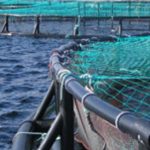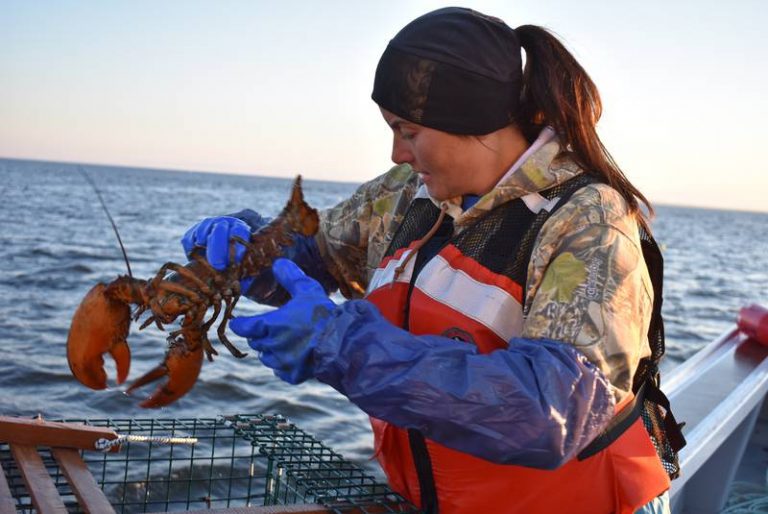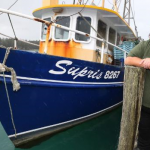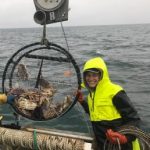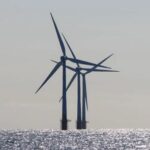Tag Archives: experiment
Bam! Scientists study wind farm construction noise impacts on lobsters… by making big noises
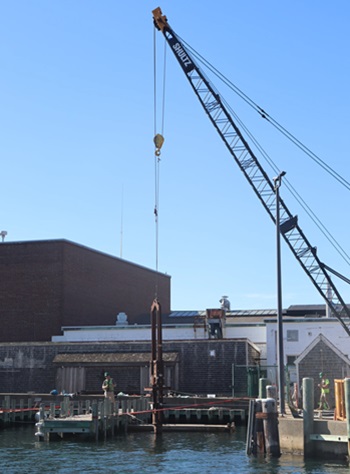 Thirteen feet below the surface of Woods Hole harbor, a lobster shelters under a plastic shield in a wire cage. An experiment is happening: every seven seconds on the dock above, a pile driver pounds a long, steel post deeper into the muddy harbor bottom nearby. The experiment happening here at this dock is designed to replicate, at small scale, the pile driving necessary to construct an offshore wind farm. The goal is to understand how a variety of marine creatures, not only lobsters, but other fish-market-friendly species like scallops, flounder, black sea bass, and squid respond to the noisy, intensive work of building an offshore wind farm. It’s something fishers and regulators are especially interested in. Already, the WHOI team’s earlier studies have shown that squid, which detect sound through vibration, responded dramatically to pile-driving noise — at least, at first. But it’s a different story for scallops, one of the highest value fisheries in the U.S. As soon as scallops were exposed to pile driving noise, they clammed up. Photos, more, >>CLICK TO READ<< 07:59
Thirteen feet below the surface of Woods Hole harbor, a lobster shelters under a plastic shield in a wire cage. An experiment is happening: every seven seconds on the dock above, a pile driver pounds a long, steel post deeper into the muddy harbor bottom nearby. The experiment happening here at this dock is designed to replicate, at small scale, the pile driving necessary to construct an offshore wind farm. The goal is to understand how a variety of marine creatures, not only lobsters, but other fish-market-friendly species like scallops, flounder, black sea bass, and squid respond to the noisy, intensive work of building an offshore wind farm. It’s something fishers and regulators are especially interested in. Already, the WHOI team’s earlier studies have shown that squid, which detect sound through vibration, responded dramatically to pile-driving noise — at least, at first. But it’s a different story for scallops, one of the highest value fisheries in the U.S. As soon as scallops were exposed to pile driving noise, they clammed up. Photos, more, >>CLICK TO READ<< 07:59
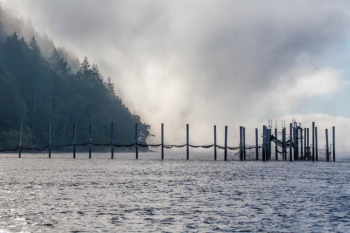
An experiment on the river – Researchers hope fish trap will be safer for wild fish
Fish traps have been outlawed in the Pacific Northwest for decades, but researchers plan to test an experimental trap in the Columbia River in hopes that it will be safer for wild fish than traditional fishing methods. Adrian Tuohy, a biologist and project manager for the Wild Fish Conservancy, said the proposed fish trap, also called a pound net, would be put in the Oregon side of the river so biologists can monitor how many fish are in the river and how many wild fish survive after being released. >click to read< 16:36
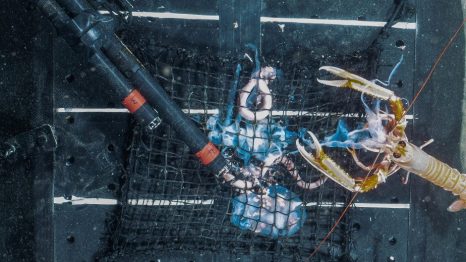
Deep-water experiment reveals lobsters’ appetite for jellyfish
A team from Heriot-Watt University was surprised to find lobster scaring off other marine life in order to eat defrosted helmet jellyfish carcasses which has been attached to an underwater camera and lowered 250 metres in the Sognefjorden in western Norway. The experiment was designed to find out which deep-water species were most attracted by a jellyfish dinner, with hagfish and amphipods expected to be interested. But it was the Norway lobster – worth around £80 million to Scottish fishing catches – that was most keen and ate half of the jellyfish. click here to read the story 10:15
Experiment: Converting the American Samoa Longline fishery into the Science fishery – audio
 As part of the experiment, Carlos Sanchez of the Longline Association is conducting experimental fishing targeting species such as yellowfin and bigeye using non-longline gear and technological equipment. Sanchez, “isn’t going to be the art of fishing, but the science of fishing” Audio here 15:38
As part of the experiment, Carlos Sanchez of the Longline Association is conducting experimental fishing targeting species such as yellowfin and bigeye using non-longline gear and technological equipment. Sanchez, “isn’t going to be the art of fishing, but the science of fishing” Audio here 15:38
Tangle net experiment: Columbia River fishermen try out gillnet alternative
 Even with a chance at late returning coho salmon, few commercial gillnet fishermen will be out with tangle nets on the Columbia River in the next two weeks. more@dailyastorian 22:26
Even with a chance at late returning coho salmon, few commercial gillnet fishermen will be out with tangle nets on the Columbia River in the next two weeks. more@dailyastorian 22:26

































